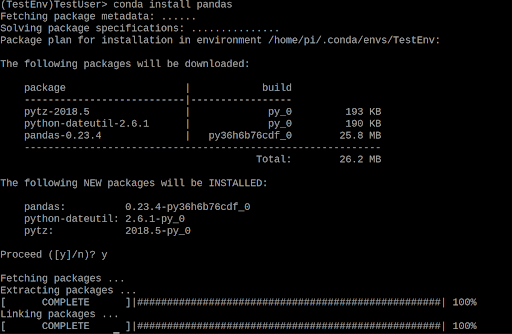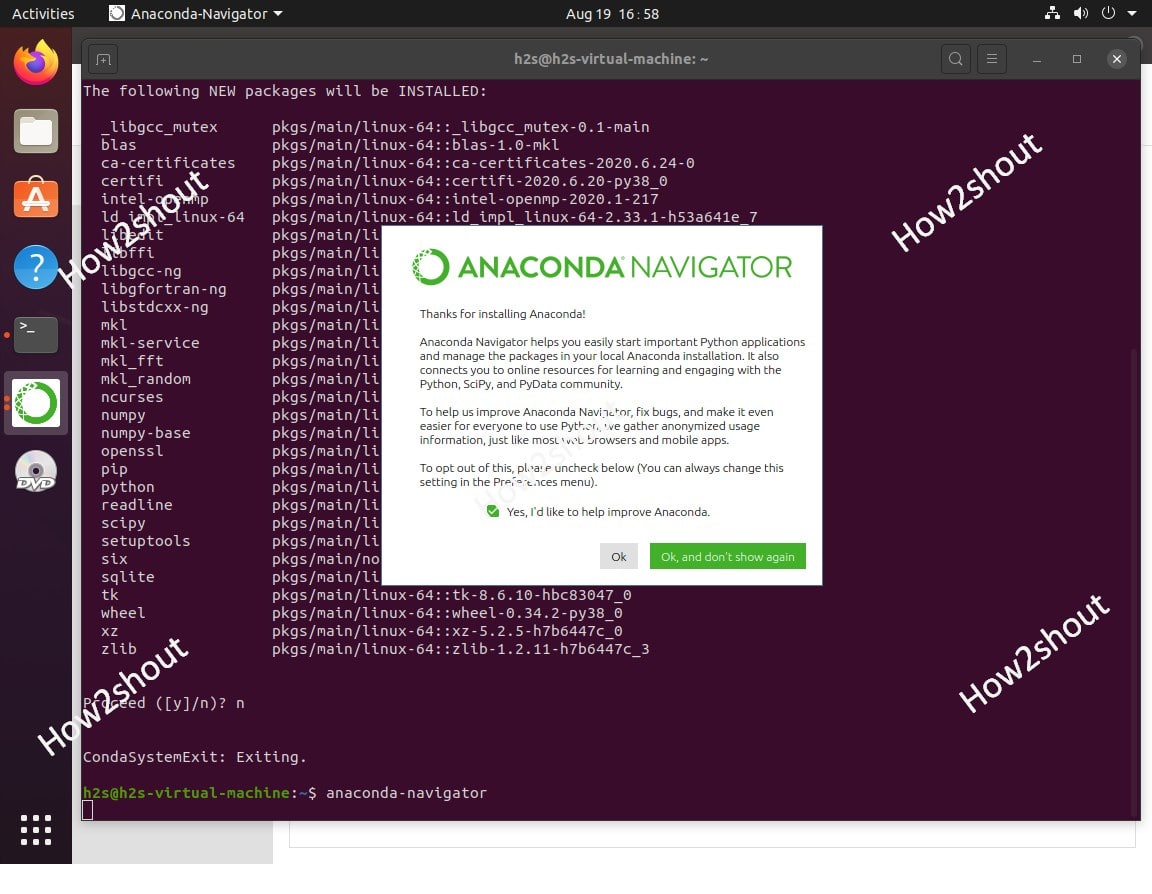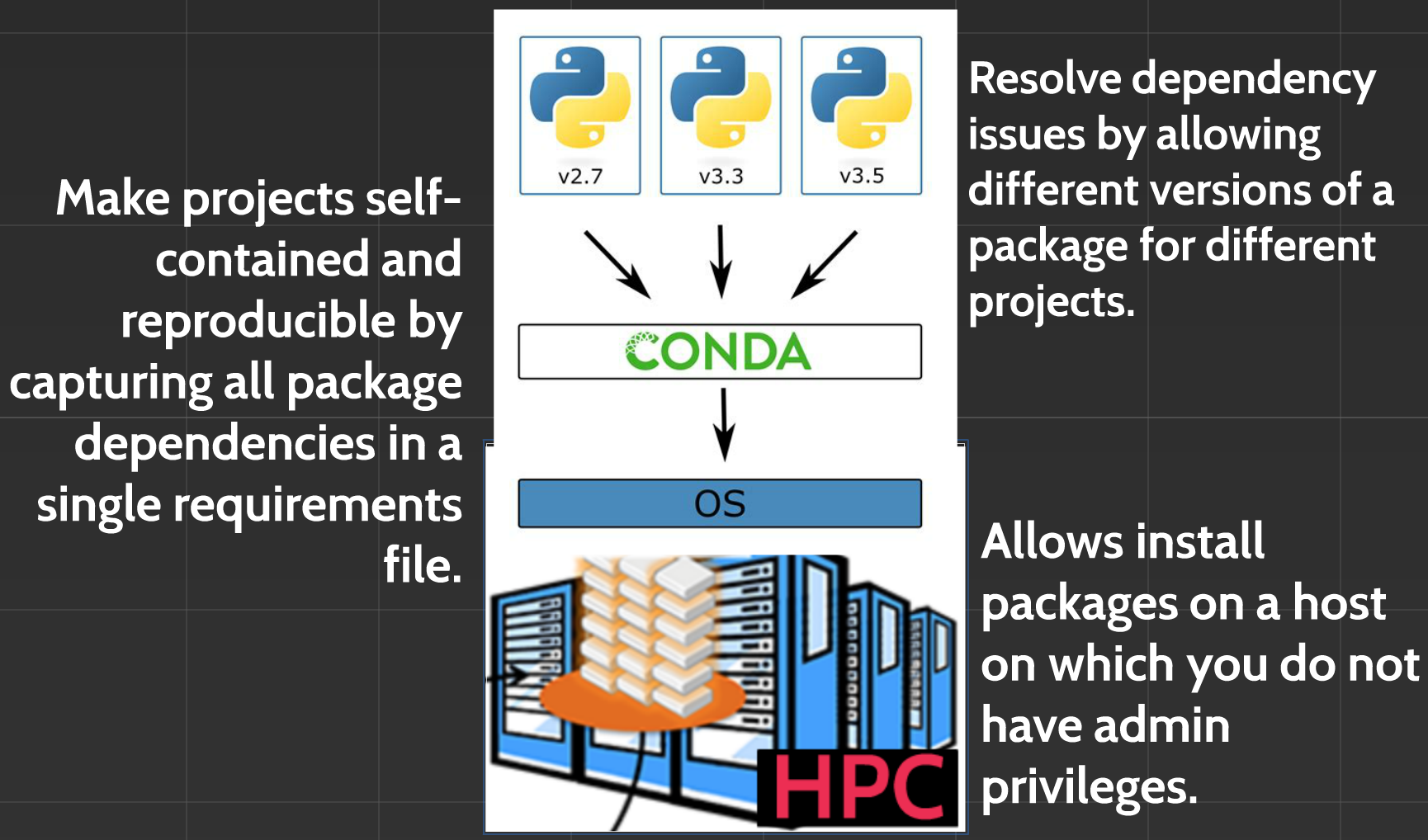

Numpy is a popular package used for scientific computing, typically computing that involve matrices. Package installation example: As an example, we will use conda to install numpy. While conda attempts to be compatible with pip, you may occasionally run into issues with packages installed through this route. The primary means of installation conda install. There are multiple ways to install a Python package. The main way to do this is by installing certain Python packages that you may use in your analysis.

Now that you are in the correct environment, you can begin adjusting it to suit your purposes. You can also see the path to your environment's Python with which python. You can check to make sure this is the case with python -version. Now you are in the virtual environment, using Python 3.5 as a default.

To activate the test_environment that you just created: Tierpsy /Users/ $username/miniconda3/envs/tierpsy Test_environment /Users/ $username/miniconda3/envs/test_environment We recommend you use Miniconda, which can be installed on macOS using the commands below:ĭev /Users/ $username/miniconda3/envs/dev Anaconda is 3 GB and contains quite a few packages and features that are unnecessary for our purposes. There are two flavors of conda - Anaconda and Miniconda. Below are instructions on installing and setting up conda, and a representative example of how virtual environments work.
#CONDA INSTALL PACKAGE DEPENDENCIES SOFTWARE#
In these cases, instead of installing software to the entire machine, you install it only in a contained environment. Virtual environments are one solution to this problem.
#CONDA INSTALL PACKAGE DEPENDENCIES UPDATE#
This is good for some software, but sometimes a developer will encourage you to update the software, which inevitably breaks your code. Normally, when you install a piece of software, it is available to run from any directory on your machine. Conda will make it easy to invoke different Python versions as needed for different tasks.Ĭonda has several features that make it a powerful tool, but the main feature we will be using is the ability to create virtual environments and install packages to that specific environment. We will also be using it to manage our Python environments. conda can be used for any language and can even act as a manager for bioinformatic software. To read more about installing and managing environments with Anaconda, please see the conda documentation.Conda is used for "package, dependency and environment managing" that is cross platform and enables reproducibility of old code, even when some packages and dependencies have been updated in the meantime. Once you're done installing and using your Anaconda packages, you may return to the default environment by typing: Likewise, the directory system for any libraries installed with conda can be found at: For example, if you would like to install the "scipy" package, type the following:Īfter the package has been installed, any associated executable files will be placed within a bin folder in your environment directory (this is automatically added to your path): Once you've created a custom environment, you need to "activate: it with the following:īy doing this, the environmental variables associated with your custom Anaconda environment (including the path to executable files) will become active.įrom here, you may install packages using the "conda install" command. If you prefer to create the environement in a specific directory, you may use the following command.

By default (i.e., if you don't specify a directory using the "-prefix" argument in the above command), custom environments will be placed at This will create a custom environment entitled "my_env". This can be accomplished using the following command: In order to ensure that there is no conflict between the software you'd like to install and existing programs (e.g., dependency version conflicts), it's best to create a custom Anaconda environment. First load the appropriate module (either Anaconda2 or Anaconda3, depending on which version of Python is desired): The easiest way to install many software packages is by using the Anaconda package manager. Alternatively, you may install the program locally in your home or project directory. This may be preferable if the program is widely used and likely to be of interest to multiple users.Ģ. You are welcome to submit a ticket and ask the HPC support staff to install the software package. When HPC users have need of software that is not currently installed on SeaWulf, there are two basic approaches that can be taken to get the programs installed:ġ.


 0 kommentar(er)
0 kommentar(er)
